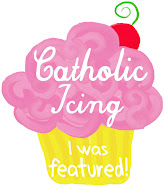Most students have a hard time keeping their thoughts organized when writing. Their sentences tend to run on and paragraphs do not flow well. Students also have a hard time remembering what came first, second, and so on. So what can a parent/teacher do to help? Here are a few activities that might help.
1. Encourage your child/student to use a story map or other graphic organizer to brainstorm ideas for his/her writing.
Graphic Organizers for you to print out:
eduplace.com
edhelper.com
enchantedlearning.com
region15.org
freelogy.com
educationoasis.com
teach-nology.com- Make graphic organizers by filling out a simple form. The materials are made instantly and can be printed directly from your computer.
2. Use the five-finger method for brainstorming events: Who, what, when, where, why.
3. Help your child/student create a family/classroom newsletter. As chief reporter, he/she might gather news, conduct interviews, give a calendar of events, and include a page of funny jokes or quotations. They can email these out or even post them on a blog for family and friends to read. They can also put them on the church bulletin board or flier.
4. Create story sequencing cards- How to make story sequencing cards with children.
5. Use these story sequencing activities to help organize what happened first, second, etc.
Story Sequencing Activities- Arrange a series of picture cards into the logical order to create the story from beginning to end. This gives the children the chance to demonstrate and reinforce their recollection of the story.
Story Sequencing- This multi-faceted lesson teaches students how to sequence stories. It reinforces the following concepts: first, last, before, after, left, right. This lesson can also focus on carryover of articulation skills to answering questions as well as story telling.
6. To remember the events in Bible stories or in order that they appear in the Bible, students can make it into a song or rhyme.
7. Use Acronyms- If you have a set of things to remember try making up an acronym from the initial letters of the items in the list. One example comes from learning how to shoot a rifle: 'breath, relax, aim, sight, squeeze' becomes BRASS. For another example where order is not important, consider the items ' nuts, apples, bananas, carrots, oranges' which could be re-arranged to 'bananas, apples, carrots, oranges, nuts' and remembered with the acronym BACON.
8. Use Mnemonics- Mnemonics are where the initial letters of a memorable sentence stand for the initial letters of pieces of information in a particular order. Lots of classroom information can be encoded in mnemonics: the order of the planets from the sun with "My Very Educated Mother Just Served Us Nine Pizzas” (Mercury, Venus, Earth, Mars, Jupiter, Saturn, Uranus, Neptune, Pluto)
9. Use the Link System- The link or linking or chaining system is used for remembering a list of random thinks in the exact order in which you wish to recall them. The essence of the system is to create a mental picture of the two adjacent items in the list that links them memorably. This is most likely if the picture or image is vivid and unusual and incorporates genuine interaction.
10. Learn a few Bible stories in order. Recite them in your head until you have them down for a few days. Add a few more and recite them in your head again for a few more days. Keep adding more after a few days.
11. Make Story Sequencing Puzzles- You can make these for just a story or to learn Bible stories in order.
Instructions:
Make a long single line puzzle that fits together in only one way out of various colors of cardstock. Make sure the puzzle runs from left to right (hooks together like a train). Write the parts of the story in order on each puzzle piece. Distribute the individual pieces to students and have them sequence the events of the story or put Bible stories in the correct order as they appear in the Bible.
12. After you read a Bible story and do the lesson, have the story written out in short sentences on index cards. Shuffle the cards and read them to the students. Give the cards to the students and have them work together and put the Bible story in order.








2 comments:
I am continually amazed by the quality of these activities. What a great service you are giving to catechists everywhere!
Jared-
LOL! Thank you for the compliment. I'm just a mom and I try really hard to provide religious activities for others to use and enjoy. I do make mistakes when posting links to activities at times, but I'm getting better. :)
Post a Comment